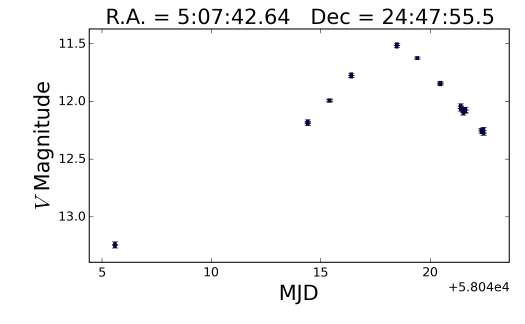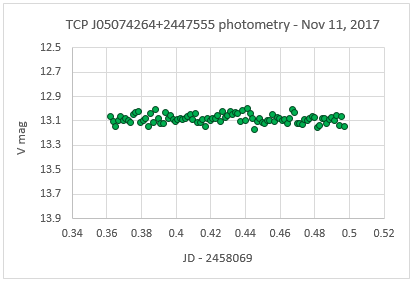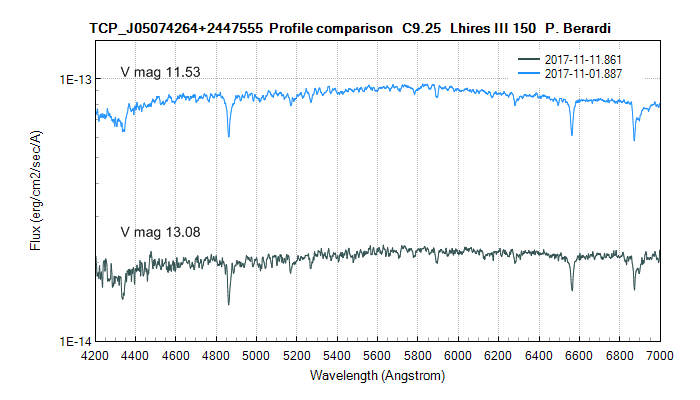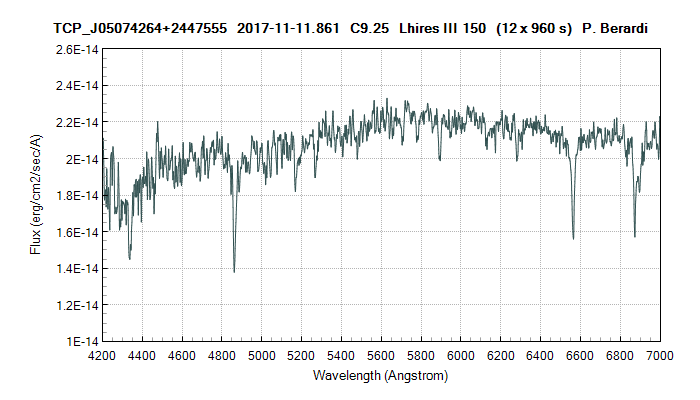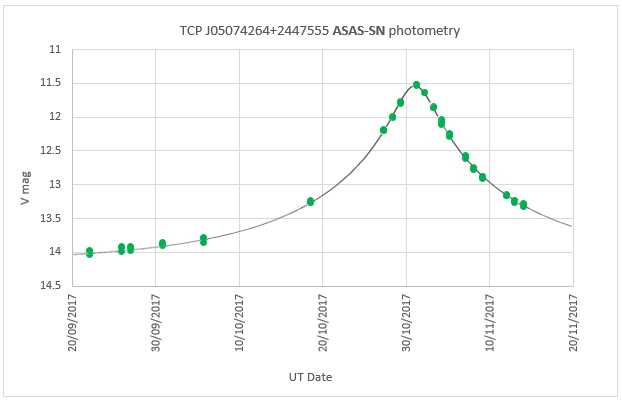TCP J05074264+2447555
Posted: Thu Nov 02, 2017 3:47 pm
Hi all, I observed the transient on Nov 1.887 with Lhires III and 150 l/mm grating (thank you François, Robin for the alert on other MLs). As reported by astronomers on BAAVSS, the spectrum is that of a normal star. The assumption for the brightening is now a microlensing event due to the gravitational field of an object moving in front of the distant star. The already known star normally shines at V mag ~14.1 but now increased at V ~11.5.
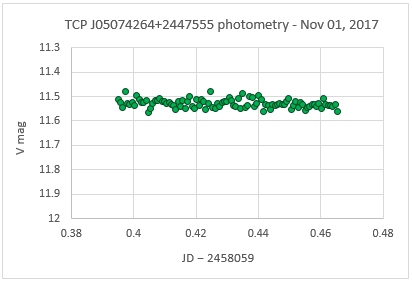
The profile, flux calibrated with V mag (simultaneous photometry):
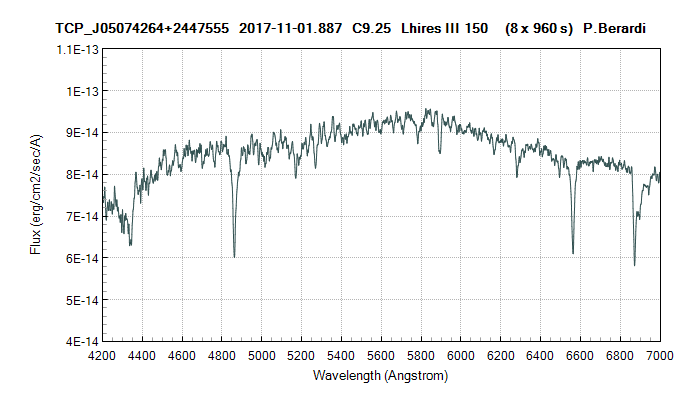
The spectrum seems to be that of a white-yellow star reddened by interstellar dust. I tried to remove the extinction using the value E(B-V)=0.4 (not far from than as indicated by IRSA Dust service for the target coordinates). Just a test...
By comparing the dereddened profile with Pickles library profiles, I feel like I see a similarity with the intermediate F spectral class. In the following graph, the target spectrum is compared with Pickles F5V and F5III.
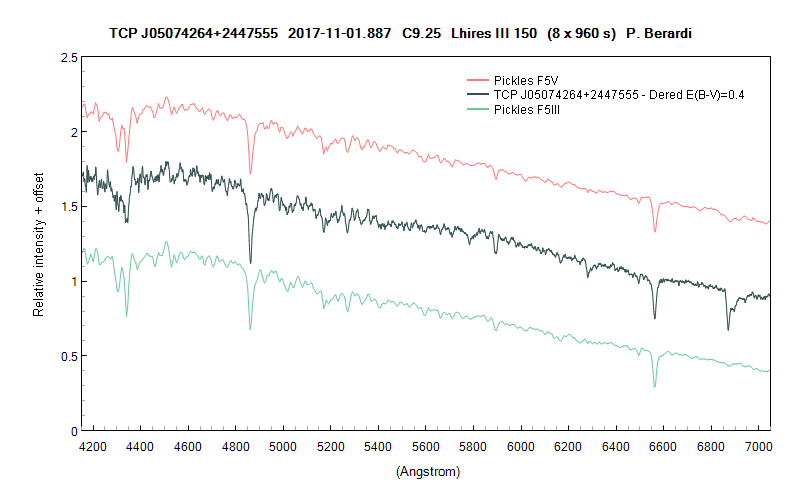
I don't know how long is an event like this. The raising steep phase began about 10 days ago (from the ASAS-SN light curve). Maybe there will be no spectra changes with time but I think it's interesting to know that there are such objects.
Paolo

The profile, flux calibrated with V mag (simultaneous photometry):

The spectrum seems to be that of a white-yellow star reddened by interstellar dust. I tried to remove the extinction using the value E(B-V)=0.4 (not far from than as indicated by IRSA Dust service for the target coordinates). Just a test...
By comparing the dereddened profile with Pickles library profiles, I feel like I see a similarity with the intermediate F spectral class. In the following graph, the target spectrum is compared with Pickles F5V and F5III.

I don't know how long is an event like this. The raising steep phase began about 10 days ago (from the ASAS-SN light curve). Maybe there will be no spectra changes with time but I think it's interesting to know that there are such objects.
Paolo
